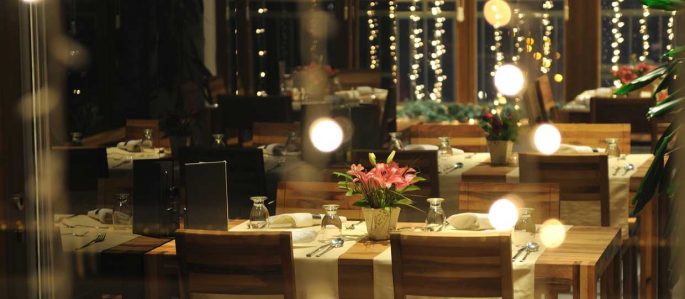The best lenses to use for darker rooms
Your hotel is more than just its exterior. Of course, you want the outside to look absolutely fantastic, but a lot goes on inside and if you can capture key moments here, you can give your potential customers an insight into what to expect.
For example, many hotels have excellent restaurant and dining facilities so it’s important to show these and show people enjoying the ambiance. But how do you do this given the relatively poor light? You certainly don’t want to erect floodlights or use harsh flash, especially if you’re trying to capture a magical moment.
Low light photography conditions call for the right lens, and the most appropriate one in this situation is a prime lens. Prime lenses have a fixed focal length, which means you won’t be able to zoom in and out, however this lack of mechanics means generally better optics.
The wide aperture on a prime allows much more light to reach the camera sensor than would a zoom lens, which translates to a better exposure for your low light photo. If you are taking a shot that does not involve a lot of movement, use a prime lens that has built-in optical image stabilisation if your camera model allows. If your camera or lens has internal image stabilisation, this will greatly help in the cause (just make sure to turn it on!).
With large aperture lenses, you no longer need be afraid of (shooting in) the dark. The large aperture allows two distinct advantages over smaller aperture lenses: low-light shooting and greater depth-of-field control. These lenses can gather more light because of the larger maximum aperture making it easier for the autofocus sensors within the camera to find contrast even in low light or low contrast situations. Lenses with smaller maximum apertures may struggle to focus in such low light conditions as they cannot allow enough light into the autofocus sensors.
Aside from aperture, another factor to consider for choosing your next kit in your lowlight photography equipment is the lens shape.
Lens with aspherical shape is best for shooting in dark rooms as they converge the light rays passing through the edges of the lens more accurately with those passing through the centre of the lens and so bring all light rays into focus as a point. This corrects spherical aberrations (which give the image the appearance of being shot through a veil, with lower contrast and poor focus) that mainly characterise lenses made entirely of spherical lens elements.

